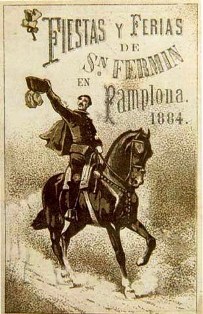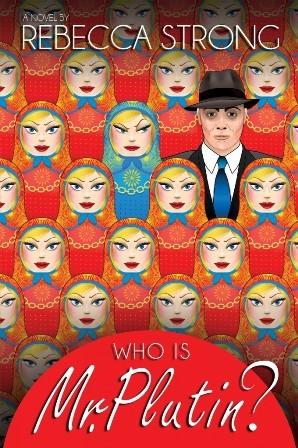Sue Burke's Blog, page 60
August 17, 2015
Different Beauty, Equal Beauty - Asymptote Blog
I have an article today in the Asymptote blog that discusses how beautiful prose is different between Spanish and English, and how to translate, retaining the beauty.
Asymptote is an international journal dedicated to literary translation.
I compare the histories of Spanish and English, which traveled different trajectories, to show how the differences arose. Beautiful Spanish should be ornate and enriched, avoiding repetition. Beautiful English should be direct and plain, seeking balanced repetition of words and structures.
http://www.asymptotejournal.com/blog/2015/08/17/different-beauty-equal-beauty/
-- Sue Burke
Asymptote is an international journal dedicated to literary translation.
I compare the histories of Spanish and English, which traveled different trajectories, to show how the differences arose. Beautiful Spanish should be ornate and enriched, avoiding repetition. Beautiful English should be direct and plain, seeking balanced repetition of words and structures.
http://www.asymptotejournal.com/blog/2015/08/17/different-beauty-equal-beauty/
-- Sue Burke
Published on August 17, 2015 07:45
August 10, 2015
The sky will weep tonight
You might call it the Perseid meteor shower, but it’s also known as las lágrimas de san Lorenzo, the tears of St. Lawrence. Here in Madrid, Spain, we’ve been celebrating the fiesta of Saint Lawrence since Thursday.

Saint Lawrence was born in Huesca or Valencia, Spain, in 225 A.D. and martyred in Rome during the persecution of Emperor Valerian in 258. He had been ordered to turn over the Church’s wealth to the imperial treasury, but instead he distributed it to the poor. According to tradition, he said they were the real treasure of the Church.
Some stories say he managed to send the chalice used in the Last Supper, the Holy Grail, back to Spain. It eventually wound up in the Valencia Cathedral. (I’ve seen it.)
For his disobedience to the Roman Empire, tradition says he was killed on about August 10 (calendars weren’t always accurate in ancient times) in an especially gruesome torture. He was placed on a large gridiron over a fire, and despite his pain (and perhaps tears), at one point, he said, “I’m done on this side. Turn me over.” For this, he is the patron saint of cooks, chefs, the poor, and comedians.
The streets of the Lavapies neighborhood of Madrid, where the fiesta de san Lorenzo is centered, will be filled long past midnight tonight with lights, music, dancing, carnival games, food, and drink. People in traditional Madrid costumes will swagger through the crowds – the costume isn’t complete without a streetwise attitude. A religious procession for San Lorenzo will pass through Lavapies this evening, and neighborhood clubs will give the devotees free limonada, Madrid lemonade, which is sangría made with white wine.
My husband and I went there last night and hoisted a couple of local micro brews, ate some Indian food (these days, Lavapiés is a very multicultural neighborhood), and enjoyed the music of ElZurdo.
I hope you see a meteor flash by.
— Sue Burke

Saint Lawrence was born in Huesca or Valencia, Spain, in 225 A.D. and martyred in Rome during the persecution of Emperor Valerian in 258. He had been ordered to turn over the Church’s wealth to the imperial treasury, but instead he distributed it to the poor. According to tradition, he said they were the real treasure of the Church.
Some stories say he managed to send the chalice used in the Last Supper, the Holy Grail, back to Spain. It eventually wound up in the Valencia Cathedral. (I’ve seen it.)
For his disobedience to the Roman Empire, tradition says he was killed on about August 10 (calendars weren’t always accurate in ancient times) in an especially gruesome torture. He was placed on a large gridiron over a fire, and despite his pain (and perhaps tears), at one point, he said, “I’m done on this side. Turn me over.” For this, he is the patron saint of cooks, chefs, the poor, and comedians.
The streets of the Lavapies neighborhood of Madrid, where the fiesta de san Lorenzo is centered, will be filled long past midnight tonight with lights, music, dancing, carnival games, food, and drink. People in traditional Madrid costumes will swagger through the crowds – the costume isn’t complete without a streetwise attitude. A religious procession for San Lorenzo will pass through Lavapies this evening, and neighborhood clubs will give the devotees free limonada, Madrid lemonade, which is sangría made with white wine.
My husband and I went there last night and hoisted a couple of local micro brews, ate some Indian food (these days, Lavapiés is a very multicultural neighborhood), and enjoyed the music of ElZurdo.
I hope you see a meteor flash by.
— Sue Burke
Published on August 10, 2015 04:19
August 5, 2015
“Dogs in Heaven”

I wrote this flash fiction to read at the Tenth Mad Open Mic: Captured Words in Madrid on May 22, 2013. I began writing with a few goals in mind. The story needed to fit within the three-minute time limit. I knew from experience that self-contained pieces get the best audience reception at an open mic – so it needed a beginning, middle, and end – and that audiences love humor. And according to Scott Adams, author of the comic strip Dilbert, everyone loves cute animals.
………
They say all dogs go to heaven, and it’s true – all dogs, most cats, and even the occasional goldfish for reasons known only to God.
As for human beings, perhaps God had a reason for sending a woman named Phoebe to heaven. She had expected to go down rather than up with such certainty that when she arrived at the afterlife, she mistook it for hell, especially when she saw all those damn dogs cavorting around. Surprisingly, the clouds of brimstone smelled pleasant, a bit like incense.
She saw a lot of dogs and a lot of happy people – demons, no doubt – and a few cats, which were almost as bad as dogs, and a sort of golden floating spark, which she took for evidence of hellfire. Since she had nothing to hope for, she leaned against a bank of clouds, weeping and waiting for a demon to approach and torment her.
Instead a dog sat down in front of her. “Why?” it asked.
Talking dogs? Well, given the locale, anything could be possible, and a misstep might bring special punishment, so despite her antipathy to all things canine, she answered:
“Why shouldn’t I be sad? I’m here.”
“Why?” the dog repeated.
She had never thought dogs were smart in life, and perhaps they were as dumb as rocks in the afterlife, too. So she said, as a test, “I committed a traffic infraction with horrible consequences.”
“Traffic? You played in traffic? Bad human, bad, bad.”
She knew she could never explain traffic regulations to an animal that understood the world by means of smelling butts. She said anyway, “I was parking illegally in a handicapped spot when I was hit by a truck.”
“Did you have your head out of the window? Bad human. Bad.”
Phoebe felt both deeper despair and supreme vindication. Dogs were in fact idiots – but they also seemed judgmental and they might be prone to punishment.
Out of nowhere, a ball appeared at the dog’s feet.
“We play here,” the dog said. “I can play fetch with you. We can have fun!”
Then she understood. The dog was a demon – all those dogs were hellish demons, as she had always suspected – and her torment would be to play fetch for eternity.
They say we make our own heaven or hell on earth, and it’s true. We can even make hell out of heaven and suffer endless torment merely because it meets our expectations. This is the difference between human beings and all dogs, most cats, and the occasional goldfish.
By the way, the dog thought Phoebe was great, and it played blissfully. For eternity.
— Sue Burke
Published on August 05, 2015 04:00
July 28, 2015
Triangulations: Lost Voices

Twenty-one short stories fill this anthology just released by Parsec Ink: aliens, superheroes, ghosts, polar bears, living statues, vengeful rabbits, and the lost voice in your own head.
One of the stories is my translation of “The Dragoon of the Order of Montesa, or the Proper Assessment of History” by Nilo María Fabra, from 1895. Fabra was a popular “futurist” fiction writer in Spain in the late 1800s as well as an important journalist, although very little of his work has been translated. His story describes the anthropological interpretation of the remains of a soldier who had been guarding Madrid’s Royal Palace, discovered far in the future.
Like all Triangulation anthologies, count on variety and fun.
Buy it here:
http://www.amazon.com/Triangulation-Lost-Voices-Jamie-Lackey/dp/0982860676
Or win a free copy at this Goodreads giveaway:
https://www.goodreads.com/giveaway/show/148239-triangulation-lost-voices
— Sue Burke
Published on July 28, 2015 03:59
July 27, 2015
Clarion Write-a-thon final week

Clarion UCSD's Sixth Annual Write-a-Thon ends August 2. A long list of authors have set themselves writing goals and have been working hard since June to earn pledges to support the Clarion Writer’s Workshop.
Clarion was founded in 1968 as a training ground for aspiring writers of science fiction, fantasy, and horror, and established writers and editors act as instructors. I attended in 1996, and I know how much it does to expand and improve the pool of writers in the genre. The more writers there are, the more great stuff we all get to read.
I’ve donated, and so can you:
http://www.clarionwriteathon.org/
— Sue Burke
Published on July 27, 2015 07:57
July 22, 2015
Go Ahead — Write This Story: Coming to a bad end
The end of a story should correspond to its structure. If the story lacks sufficient conflict, it won’t reach an end, it will just stop. If it has too much conflict, the ending may be unbelievable. An ending can be too predictable if the story structure is too simple. If the conflict is solved by some sudden outside event or force, the story’s structure and internal logic is violated. Worst of all are stories that end with “it was all a dream,” because then the story never mattered and wasted our time.
If you want to write a story that comes to a good end, here are a few ideas:
• This is a family drama about a son who thought his parents were acting strangely because they were watching too much Fox News, but then he begins to suspect demonic possession and must devise a way to differentiate between the two.
• This is a children’s story about a little girl whose invisible friends go away, and she decides to find them.
• This is a time travel novel in which the bereaved at a funeral discover that their memories of the deceased do not match in certain significant events and chronologies, making them realize they never knew who or what their friend and relative really was.
— Sue Burke
If you want to write a story that comes to a good end, here are a few ideas:
• This is a family drama about a son who thought his parents were acting strangely because they were watching too much Fox News, but then he begins to suspect demonic possession and must devise a way to differentiate between the two.
• This is a children’s story about a little girl whose invisible friends go away, and she decides to find them.
• This is a time travel novel in which the bereaved at a funeral discover that their memories of the deceased do not match in certain significant events and chronologies, making them realize they never knew who or what their friend and relative really was.
— Sue Burke
Published on July 22, 2015 09:31
July 15, 2015
My take on the Hugo Award movie nominations
If the Hugo nominations can be taken as a “recommended reading/viewing list,” they succeeded this year in the category of “Best Dramatic Presentation – Long Form.” I can personally recommend all the movies on the ballot this year, although for different reasons for each one.
Guardians of the Galaxy
Comic book science fiction fun. A collection of petty criminals become allies and save the galaxy (really, they do) with lots of fight scenes and explosions. Nothing deep, and I approached it very unsure about that racoon, but it turned out to be worth watching.
Interstellar
This movie may not fully succeed, but it tries very hard. The world is dying, some astronauts fly off to search for a new home for humanity, and one of them delivers the knowledge from the future that humanity desperately needs, although with a very odd communications system. The plot mostly hangs together, and it gets some tricky physics right. If not the year’s best, it is the most ambitious.
The Lego Movie
Recommended to me by my brother, who has young children. It tells the story of a Lego construction worker who must save the world from the evil Lord Business using the special Piece of Resistance. This movie is joyous insanity for children and adults, and in retrospect (although not as I was watching it), it even makes sense. It also makes good use of Lego’s unique fantasy possibilities. Everything is awesome!!!
The Edge of Tomorrow
I didn’t see this, but my husband, who is also a Hugo voter, provides this summary: "Groundhog Day with war and aliens. Tom Cruz plays a cocky war reporter trying to avoid going to the front, and he ends up dying over and over again in the same battle until he learns how to fight. Well-executed with a lot of obligatory action. Not going to be a classic, but nothing’s wrong with it."
Captain America: The Winter Soldier
Another comic-book-based movie, and I think it works successfully on the big screen. Captain America discovers ... well, no spoilers, but he has to defend freedom and protect millions of innocent people, and there’s a political undercurrent to the plot. Tense, smart, and a high body count with lots and lots and lots of well-done fight sequences.
— Sue Burke
Guardians of the Galaxy
Comic book science fiction fun. A collection of petty criminals become allies and save the galaxy (really, they do) with lots of fight scenes and explosions. Nothing deep, and I approached it very unsure about that racoon, but it turned out to be worth watching.
Interstellar
This movie may not fully succeed, but it tries very hard. The world is dying, some astronauts fly off to search for a new home for humanity, and one of them delivers the knowledge from the future that humanity desperately needs, although with a very odd communications system. The plot mostly hangs together, and it gets some tricky physics right. If not the year’s best, it is the most ambitious.
The Lego Movie
Recommended to me by my brother, who has young children. It tells the story of a Lego construction worker who must save the world from the evil Lord Business using the special Piece of Resistance. This movie is joyous insanity for children and adults, and in retrospect (although not as I was watching it), it even makes sense. It also makes good use of Lego’s unique fantasy possibilities. Everything is awesome!!!
The Edge of Tomorrow
I didn’t see this, but my husband, who is also a Hugo voter, provides this summary: "Groundhog Day with war and aliens. Tom Cruz plays a cocky war reporter trying to avoid going to the front, and he ends up dying over and over again in the same battle until he learns how to fight. Well-executed with a lot of obligatory action. Not going to be a classic, but nothing’s wrong with it."
Captain America: The Winter Soldier
Another comic-book-based movie, and I think it works successfully on the big screen. Captain America discovers ... well, no spoilers, but he has to defend freedom and protect millions of innocent people, and there’s a political undercurrent to the plot. Tense, smart, and a high body count with lots and lots and lots of well-done fight sequences.
— Sue Burke
Published on July 15, 2015 03:26
July 8, 2015
My take on the Hugo-nominated short stories
I think there’s a point when a writer is more-or-less good but not great, which can lead to misjudgement. A writer who isn’t winning awards may conclude something must be wrong with the awards rather than suspecting he or she simply isn’t great.
While all awards are subjective, I think literary quality is a real thing: a well-structured plot, controlled prose, originality, emotional depth, vivid scenes, and effective dialogue, for example. As a Hugo voter, I believe my job is to pick the year’s best. My vote means I can recommend that work to others. In some years, in some categories, consistent high quality has made the choice difficult. Not this year in short stories.
“Turncoat” by Steve Rzasa
Not bad but not great. The premise isn’t horribly original: an artificial intelligence decides to switch sides and become as human as possible during a post-human/machine vs. human war. An old idea can be made new by excellent execution, but in this case the storytelling lacks polish and doesn’t achieve the emotional depth it seeks. Too many numbers clutter the text and hide more important concerns than the exact count of each specific type of missile. Some references need anchoring, like “Benedict” – in such a far future, will everyone still know about a minor incident in US history? That detail needed to be set up first for it to work. And the title is a spoiler. This just isn’t one of the year’s best SF short stories, and I don’t believe it made it to the ballot on its own strength.
“The Parliament of Beasts and Birds” by John C. Wright
Man (sic) has disappeared, and after a long discussion between the animals and then the appearance of two angels, some of the animals take his place. It’s a Christian allegory, and leaving aside the poor quality of the story-telling, is this story science fiction or fantasy? The Puppies have argued that “If You Were a Dinosaur, My Love” by Rachel Swirsky wasn’t SFF (and although I loved the story, I’ll agree on that) so her story shouldn’t even have been on last year’s ballot. The same applies here – unless you want to argue that Christianity is a fantasy, and I’m not going there. It shouldn’t be on the ballot. So it gets no vote, not even below “No Award.”
“Totalled” by Kary English
A woman dies in an accident, and her brain is used in an experiment. Not a bad story, but weak. The plot is distracted by side issues like an arrogant research director, who is a mere stereotype and supplies false conflict, while the real conflict – life and death – receives little attention. The story fails to reach the emotional height it could for lack of focus. Not bad, but not one of the year’s best, and not worthy of a vote.
“On a Spiritual Plain” by Lou Antonelli
On a planet where ghosts are real, a human dies, and a human pastor must conduct that ghost to its rest in keeping with the traditions of the native sentient life form. The story idea isn’t bad, but the storytelling style tells so much rather than shows that it reads at times like a chatty outline for a story rather than a story. This is another story that fails to reach its potential. Not one of the year’s best, and not worthy of a vote.
“A Single Samurai” by Steven Diamond
The idea is awesome: a monster the size of a mountain must be stopped, and a lone samurai has to take it on. The execution, though, fails to dramatize the idea. Instead we get a lot of back story, a lot of not especially philosophical inner dialogue, and little action or gripping descriptions of this amazing monster. A promising idea goes unfulfilled: not one of the year’s top five best short stories, not by a long shot.
— Sue Burke
While all awards are subjective, I think literary quality is a real thing: a well-structured plot, controlled prose, originality, emotional depth, vivid scenes, and effective dialogue, for example. As a Hugo voter, I believe my job is to pick the year’s best. My vote means I can recommend that work to others. In some years, in some categories, consistent high quality has made the choice difficult. Not this year in short stories.
“Turncoat” by Steve Rzasa
Not bad but not great. The premise isn’t horribly original: an artificial intelligence decides to switch sides and become as human as possible during a post-human/machine vs. human war. An old idea can be made new by excellent execution, but in this case the storytelling lacks polish and doesn’t achieve the emotional depth it seeks. Too many numbers clutter the text and hide more important concerns than the exact count of each specific type of missile. Some references need anchoring, like “Benedict” – in such a far future, will everyone still know about a minor incident in US history? That detail needed to be set up first for it to work. And the title is a spoiler. This just isn’t one of the year’s best SF short stories, and I don’t believe it made it to the ballot on its own strength.
“The Parliament of Beasts and Birds” by John C. Wright
Man (sic) has disappeared, and after a long discussion between the animals and then the appearance of two angels, some of the animals take his place. It’s a Christian allegory, and leaving aside the poor quality of the story-telling, is this story science fiction or fantasy? The Puppies have argued that “If You Were a Dinosaur, My Love” by Rachel Swirsky wasn’t SFF (and although I loved the story, I’ll agree on that) so her story shouldn’t even have been on last year’s ballot. The same applies here – unless you want to argue that Christianity is a fantasy, and I’m not going there. It shouldn’t be on the ballot. So it gets no vote, not even below “No Award.”
“Totalled” by Kary English
A woman dies in an accident, and her brain is used in an experiment. Not a bad story, but weak. The plot is distracted by side issues like an arrogant research director, who is a mere stereotype and supplies false conflict, while the real conflict – life and death – receives little attention. The story fails to reach the emotional height it could for lack of focus. Not bad, but not one of the year’s best, and not worthy of a vote.
“On a Spiritual Plain” by Lou Antonelli
On a planet where ghosts are real, a human dies, and a human pastor must conduct that ghost to its rest in keeping with the traditions of the native sentient life form. The story idea isn’t bad, but the storytelling style tells so much rather than shows that it reads at times like a chatty outline for a story rather than a story. This is another story that fails to reach its potential. Not one of the year’s best, and not worthy of a vote.
“A Single Samurai” by Steven Diamond
The idea is awesome: a monster the size of a mountain must be stopped, and a lone samurai has to take it on. The execution, though, fails to dramatize the idea. Instead we get a lot of back story, a lot of not especially philosophical inner dialogue, and little action or gripping descriptions of this amazing monster. A promising idea goes unfulfilled: not one of the year’s top five best short stories, not by a long shot.
— Sue Burke
Published on July 08, 2015 00:18
July 1, 2015
How they started running in Pamplona

Every year from July 7 to 14 at 8 a.m sharp, six bulls run through the streets of Pamplona, Spain, chasing about two thousand people. This run, which usually lasts three minutes or less and ends with a report of injuries and an occasional death, has achieved worldwide fame for what some consider pure insanity, and it’s hard to argue with that. But the run is only a small part of the festivities for Saint Fermin, known in Spain as the Sanfermines: religious processions, children’s activities, music, dancing, and a fireworks contest.
It all started before the 1100s with religious activities on October 10 in Pamplona to honor Saint Fermin, one of the patron saints of the kingdom of Navarra. By the 1200s, the city was also celebrating a fair on the night of Saint John the Baptist, June 23 and 24, or sometimes on Saint Peter’s day, June 29.
Like medieval fairs depicted in movies, there was a marketplace and entertainment that attracted crowds, but even more important was the sale of livestock. And, being Spanish, the fair ended with a bullfight, although in medieval times the bull was fought with lances by men on horseback, usually knights.
In 1324, the Sanfermines lasted seven days, and in 1381, King Carlos II of Navarra granted it tax-free status. But that part of Spain is rainy in autumn, so in 1591 all the fairs were united into a single celebration that started on the seventh day of the seventh month – July 7 – to take advantage of sunny summer days. Despite the date change, it was still called the San Fermin fiesta.
The 1591 festival opened with a ceremonial proclamation, a pregón. (Fiestas in Spain still often open with a pregón.) A tournament with lances was held in the main square, and a theater presentation dramatized the “Comedy and Tragedy of the Blessed Saint Fermin.” Dancing and religious processions in the streets occurred throughout the fiesta, and goods and livestock were bought and sold. And there was a bullfight in the main square.
These medieval and Renaissance bullfights were the origin of the running with the bulls. At that time, the run was called the entrada (entrance) because the bulls entered from pastures outside of town and were herded to the corral at the main square at dawn. Just as today, the bulls were led by steers who knew the route, but in those days the bulls were followed by people on horseback or on foot, shouting and waving staffs.
In 1776, the first fencing was built along the route. Sometime in the 1800s, people began to run in front of the bulls, a custom that continues today in Pamplona and in many other cities and towns in Spain. In 1856, the event became known as the encierro (enclosure), which is still the word in Spanish for a running of the bulls. The first rules for the running were created by the municipality in 1867.
The first montón (pileup) was documented in 1878, one of the most feared accidents in a running of the bulls: someone in the frantic rush ahead of the bulls trips and falls. Another runner trips and falls on him. Then, in the haste and panic, more runners fall until they form a pile. If it blocks the entrance to the bullring, the result is terror: the bulls are on their way and cannot be stopped. A pileup occurred in Pamplona on July 13, 2013. Although no one died, some people were injured as the bulls and steers tried to push through until, finally, the animals were guided away behind a fence at the side of the ring. The pileup starts 2 minutes into this video.
The Sanfermines remained relatively unknown until Ernest Hemingway wrote about them in the novel The Sun Also Rises in 1926. In the 1950s the fiesta became international, and despite the other festivities, the running of the bulls has overshadowed all else, at least to outside observers. A poll by the city in 2014 found that 56% of the runners came from other countries: 24% from the United States, 11% from Australia and New Zealand, 4% from Britain, 2.5% from France, and 2.5% from South America. Only 8% were from Pamplona, 6% from Navarra Province, and 30% from other parts of Spain.
A total of 17,126 runners participated during the 2014 Sanfermines. On July 13 alone, 2,924 runners ran ahead of the bulls – but on every day of the run, most runners start so far ahead of the bulls that they are in the bullring and have leaped up into the seats, ready for the post-run entertainment, long before the bulls are halfway there.
All this has turned a what was a local medieval fair to swap livestock and say some prayers into a modern international festival. The city of Pamplona has 190,000 inhabitants, but more than a million people now come for the Sanfermines. And although it may seem hard to believe, they do a lot more than just run with the bulls.
— Sue Burke
Also posted at my professional writing web page:
Published on July 01, 2015 02:47
June 22, 2015
“Who Is Mr. Plutin?”

I belong to an English-language writer’s club here in Madrid, and because there aren’t a lot of us, I sometimes critique books outside my usual preferences. That’s how I got to read the novel Who Is Mr. Plutin? by Rebecca Strong as a beta reader. I’m glad I did.
The setup sounds like it might be a Mary Sue, but it’s not: A young New York Russian-American woman named Vika wakes up one morning in St. Petersburg, Russia, and she’s someone different, someone she knows nothing about. The new Vika is blonde, beautiful, and slim, and she has a luxury apartment with a closet full of designer clothes, not to mention a wonderful, handsome, filthy rich husband. And a dog.
Who is she? Or rather, what? Nothing in her life has prepared her for this, and soon she realizes that staying alive depends on figuring it out, and she can trust no one. As she bumbles along, stumbling in her new high heels, every discovery reveals that things are worse and more dangerous than she thought – and for more people than just herself. In fact, her new life seems to involve Mr. Plutin, the president of Russia, and some sort of espionage mission or conspiracy involving advanced science, but with who and against who?
If that were not bad enough, she’s pregnant with no idea who the father is, since she can’t remember anything, and morning sickness hardly seems useful.
It’s a fast, fun, and funny story full of plot twists, smartly told. Rebecca Strong spent enough time in Russia to know the country from the inside, and has spent enough time developing a sardonic sense of humor and writing skills to tell a good story.
As I said, this book would have flown under my radar if I didn’t know her personally. It would have been my loss.
Who is Mr. Plutin? is being released today.
— Sue Burke
Published on June 22, 2015 06:40



